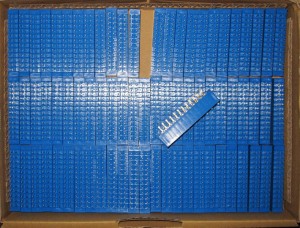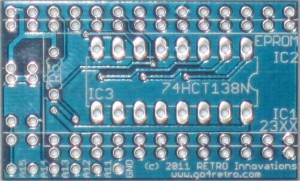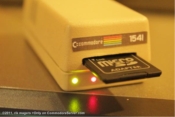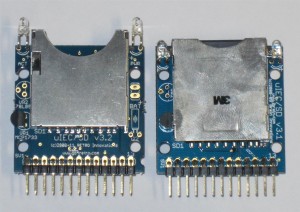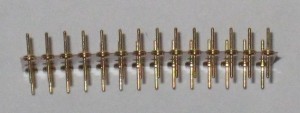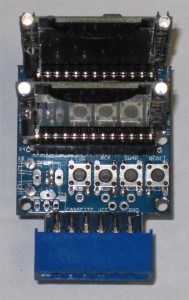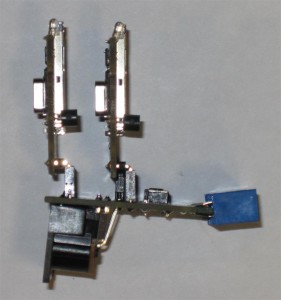As usual, ECCC 2011 was both hectic and fun. It’s been a few days since the show, as it took a while to travel home and recover.
RETRO Innovations arrived Friday evening in time to unload equipment into the show hall and select a couple choice tables near power and good traffic areas. However, almost as soon as we finished, it was time to close the hall for the night. I gathered up a few items and set up in the Fairfield Hotel foyer to finish some soldering and check on email. When I left at 1AM (early, I know), the room was still full of Commodore folks.
Saturday started strong, with sales brisk until nearly noon. ZoomFloppies sold well, though uIEC/SD unit sales were nontrivial as well (typically, a large number of the same folks attend each year, so year over years sales of the same item tend to decrease after the first year). JiffyDOS ROM sets sold at a steady pace, as did IEC cables. By mid afternoon, sales had tapered off and I was able to present ZoomFLoppy at 4PM in the demo area without too much trouble. I drug in an 8050 drive to show off IEEE support, recently added to the ZF firmware, while showing the rest of the ZoomFloppy features.
In the evening, I worked with Leif Bloomquist on a long-in-development VIC-MIDI project. Having first collaborated with Leif on the project in early 2010, it’s been a long road getting to this point. But, Leif worked on the driver code in the evening and was able to coax correct operation out the circuit before nightfall. Hopefully, a finished design and a product offering will be available before the first show in 2012.
After the hall closed Saturday night, we once again gathered in the hotel foyer. I sat with Six and Elwix of Style to discuss some new hardware design ideas, but mainly just enjoyed the din of activity.
This year, the show opened again on Sunday, though I had already made alternate Sunday plans. Though I was in no hurry, packing went slower than expected since I had to pull items out a number of times to make last minute sales. I can’t complain about sales, though. By 1PM, I had stuffed everything back into containers and closed up shop.
Of course, no show would be complete unless purchases were made. While eyeing some individual 8″ floppy disks, I happened upon a VIC-1540 with an original DOS ROM. Those ended up in my possession (I already have a 1540, but I don’t have an original ROM). Anticipating purchases, I had left a bit of room for things like this and the 10 VIC expansion cases (Think VIC-1020, but minus the expansion PCB. They were used to lock down the VIC in an education setting) Leif brought to the show (I purchased them at WoC 2010, but was not in attendance). As well, I asked Six (Oliver Viebrooks) to bring an SX64 shipping box to that show I had stashed at his home years before. Finally, the shipping box would make it home.
Or not… At the end of the show, I ended up purchasing a Xerox Phaser 8400 Workgroup color printer (I’ve been looking for a color unit for invoice printing, but couldn’t justify the cost of a new color laser in lieu of the perfectly functioning LaserJet 5 currently in use). The price was too good to pass up, but the cargo area could not hold the printer, the products, the VIC cases, and the SX64 shipping box in addition to suitcases. So, the SX box went home to downstate IL with family. Maybe one day it’ll make it home. It’s been in IL, then in KY, and now somewhere else in IL.
To be truthful, I attend to see folks and share stories, not sell products. It was nice to catch up with folks from past events as well as meet people I’ve only known online. Still, it is nice to sell enough stuff to finance the trip.
Above all, I’m exceedingly grateful that Jason Compton underwrites the entire cost of the event, offering it for free to businesses and attendees alike. May it continue to be held for years to come. I’m also excited that the Vintage Computer Festival was held at the same time in the same building. Though I didn’t get to spend much time at their exhibits, the exhibits were well planned and very intriguing.

